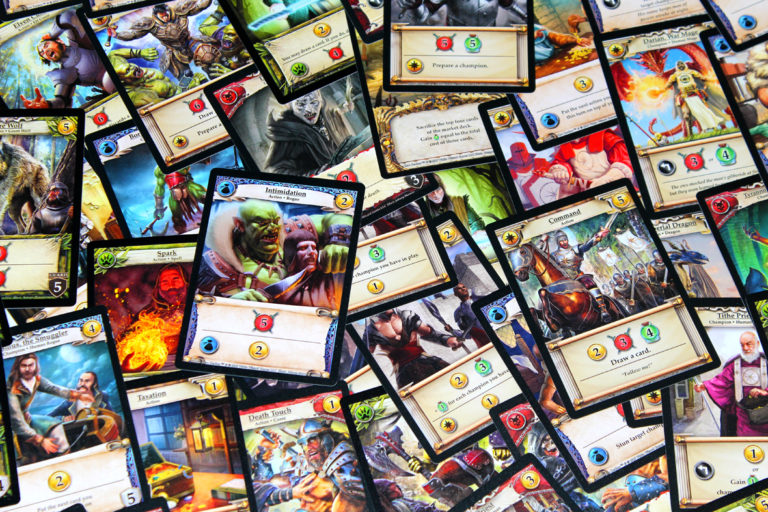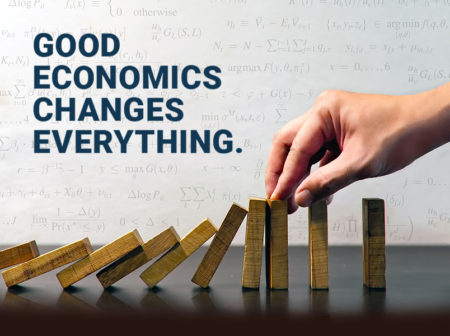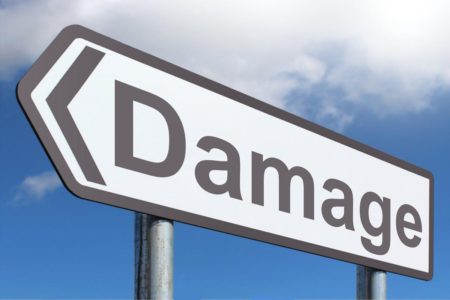One piece of advice I hear given to newer players is to concentrate on their own deck. To focus on learning how to make a good deck, then to branch out and learn how to counter their opponent. This isn’t bad advice, but I believe it can lead to some bad habits. A deck that ignores what your opponent is doing is not really a good deck. Since you have only one opponent, countering their strategy can be vital. Your deck is not an independent system. It is part of a system with your opponent’s deck and the market row itself. You want to maximize your ability to interact with both, while minimizing your opponent’s ability to affect you or to take advantage of the market row. Yes, you can win games when you ignore (or mostly ignore) what your opponent is doing. You can get lucky with what flips on the market row, when you get good shuffles, or even by playing an opponent who makes some bad choices. These things do not build good habits or broaden your understanding, and they can leave you completely at the mercy of the randomness inherent in a deck-builder.
You need to know what cards are effective in different stages of the game and how you can combo them together for greater effect. Faction bonuses can be important, but the goal is not to maximize the faction bonuses in your deck. The goal is to bring your opponent’s health to zero. So buy the best cards in the row that will help you advance your strategy. Take into account what is in your deck, your opponent’s deck, the market row, and your health totals. Don’t let what is already in your deck blind you to what is likely to happen in the game. Pay attention and adjust to changing conditions. You should not avoid buying a card just because the faction doesn’t fit with what you already have. Building your deck by buying off-faction is fine if it lets you buy a great card, or gives you the damage to finish your opponent off then you won’t even care that you didn’t get the faction bonus.
There is a great Star Realms article from Brad Elkey (a.k.a. PanicFire) discussing four basic card types. It helped me a lot when learning to play that game. With his blessing, I have taken that information and applied it to Hero Realms. Since this game has asymmetrical starting decks, class skills/abilities, and other differences, I thought it would be worthwhile to expand and edit what was said there in order to translate those ideas for Hero Realms. To help increase your understanding of this game and to show another way to build an effective deck. A way that uses card types independently of factions. It focuses on archetypes to not only maximize their effects, but to counter your opponent’s strategy. This style of play requires an understanding of game pace and how it impacts the effectiveness of card abilities. Understanding these things will lead to better play and more wins!
Before I get into those four basic card types I want to cover what each Hero Realms faction does, and then compare those factions with the broader card types.
Faction Primary Card Effects and Faction Bonuses
| Faction | Primary Effects | Faction Bonuses |
|---|---|---|
| Wild - Green | Damage, Discard, Cycle | Damage, Discard, Draw, Cycle |
| Necros - Red | Sacrifice, Damage, Economy | Draw, Damage |
| Imperial - Yellow | Healing, Economy, Damage | Economy, Healing, Prepare, Draw |
| Guild - Blue | Economy, Damage, Draw | Damage, Economy, Stun, Draw, Top-Deck/To-Hand |
Now we can look at how those mechanics fit into four different card types that are independent of the factions themselves.
Economy: Cards give you resources to buy other cards.
Defense: Cards that provide healing or champions that your opponent will spend damage on instead of attacking your health.
Damage: Cards that provide damage that you can apply to your opponent’s health and their champions.
Card Advantage: Cards that draw, discard, sacrifice, or cycle.
If we compare these card types to the four factions, we will find that each faction does more than one of them. We can combine these basic types of cards in a deck in order to accomplish goals that will work efficiently at different points in the game. Individual cards may fall into more than one of these categories, and will allow you to pivot to another strategy more easily when the game state calls for you to do so.
Let’s explore each of these concepts individually.
Economy
Economy gives you gold to purchase other cards from the market row. Economy cards are better when purchased early, but worse later in the game. When you purchase a card there is usually a one-deck delay before you can play it unless you have a way to put it on your draw pile or into your hand. This means there is usually a two-deck delay from the time you purchase the economy card to the time you can play the card you purchased with that economy. This means economy cards need more time (and a longer game) in order to be most effective!
Hero classes like the Thief, Wizard, and Ranger are able to leverage economy faster because of the abilities and upgrades they have. Clerics naturally favor a long game because of how their starting deck is composed and their healing abilities. Fighters are not naturally set up for a long game and have a harder time transitioning to this style of play.
Defense
Defense is any Imperial card which gives healing or any champion that your opponent must spend damage on to stun, granting you an extension on your health every time you play that champion. Non-guard champions which are safe for your opponent to ignore do not fall under this definition (though most of the time it is better for your opponent to stun these as well). If your opponent has stun effects from cards like Fire Bomb and Hit Job, your champion will not count for defense either since they are not spending damage to do this. You should be mindful of this in the late game when those faction bonuses are more likely to happen.
Defense is usually best reserved in the mid to late game since sacrifice and economy pay off more in the opening. There are exceptions to this, like Imperial cards which give you both healing and economy/damage and the extra healing throughout the game adds up while you get the other effect you want. Also, in some match-ups an early guard can cause a lot of trouble for your opponent if they don’t have the damage to remove it quickly.
Clerics have a starting deck based upon this type of play and they have skills and abilities that let them heal. The Thief can also have a lot of healing from their skill upgrades. Rangers have a card that allows them to purchase champions for less gold than normal that they can take advantage of, but it is not naturally their best strategy. Because of their starting health, Wizards should usually get some defense (especially Imperial healing) early. Fighters will want to go with this sort of strategy when they are looking at a matchup that will force the game to go longer.
Card Advantage
Card Advantage is any type of card which draws a card, forces your opponent to discard, sacrifices, or cycles cards in your deck. Anything that improves the overall effectiveness of your cards or diminishes your opponent’s. With the asymmetrical starting decks, there are a number of weak cards included that you want to get rid of as soon as possible. Comparing them to the cards you purchase, they are not worth the card slot they take up. The ability to draw cards so you’re not limited to five cards, cycle the starter cards out of your hand for new ones, or sacrifice them out of your deck entirely will increase the efficiency of the cards you play and improve the overall effectiveness of each hand. When you force your opponent to discard a card, this will give them the opposite effect, card disadvantage. The more discards you can group into a single turn the more it hurts their turn, sometimes exponentially.
A card that draws one card basically just replaces itself (this is known as a cantrip), but it still grants you card advantage by letting you play more cards than the five you started the turn with, and doesn’t slow down your deck. Card draw also provides more opportunities to faction and helps you play cards you manage to top-deck. Sacrifice grants you a delayed card advantage: the first round you play a sacrifice card it only gives you its primary effect (economy or combat) but the deck after this you will be down one starter card, thereby gaining card advantage by removing that weak card from all future shuffles. Sacrifice has a two-deck delay just like economy does, and is more useful the earlier you play it. Avoid purchasing sacrifice late unless it also generates more combat than you can expect to get with another card that you would potentially draw, or you have a way to get it into play quickly (i.e. top-decking). When debating between sacrifice and draw, you should know that sacrifice is better earlier because of this delay and because sacrificing cards has a long-term effect while drawing cards is more of a short-term advantage. Early in the game you have a higher chance of drawing into a starter card, but card draw gains more of an advantage over sacrifice the later the game goes since you have a higher degree of drawing into more powerful cards. Cards that allow you to top-deck other cards or acquire them directly into your hand also fit into this category since they give you more plays of that card and speed up your deck. Card advantage through sacrifice and draw usually help any strategy and are often the “engine” upon which most strategies are built, cycling your deck and getting powerful cards in play quickly.
The Ranger is known for this style of play, and their starting deck is already set up to cycle/draw quickly, they have a number of upgrades to help with this. Wizards also have innate draw/scry capabilities in their starting deck and skills. A Thief with Shadow Mask, or upgraded Heist abilities has the top-deck/to-hand form of card advantage built in, they have card draw upgrades, and can use the discard form of card advantage from the Pickpocket skill upgrades. The Fighter has the Throwing Axe and may have the Sharpening Stone upgrade which helps them with card draw, in a longer game getting more card advantage is vital for them to keep up the fast paced damage. The Cleric has a number of upgrades they can use to draw, the Resurrect ability is also a form of card advantage (even more so when you use it to remove champions from your discard right before a shuffle).
Damage
The only way to win the game is to reduce your opponent’s health to zero, so you will need damage cards to win no matter what strategy you are playing. Everything else is just either giving you the ability to buy more damage (economy), buying time for your damage to pay off (defense), or making your damage more effective (card advantage). You always need enough damage to take out your opponent’s champions or they will stay in play and your opponent will have a head start on every turn this happens. For this reason it is important to mirror your opponent’s champions with damage equal to or greater than their defense. The most efficient damage destroys champions (stun effects) – the bonus damage for taking out a champion for free is much stronger than most other types of faction bonuses.
You can compare how much damage you are doing compared to your opponent by adding the damage in each of your decks and subtracting the other deck’s defense. In general, you should purchase damage early if your opponent is buying champions or if the market row has cheap efficient damage cards, otherwise building your economy in order to set yourself up to purchase the more expensive damage cards later is a solid strategy. The game is won and lost on damage so if you’re passing up the opportunity to purchase damage you must always have a good reason why.
Every starting deck has damage included, but Fighters have the highest amount when you include their skills and abilities. The Cleric starts with the least amount in their starting deck, and will need to be able to buy more in order to handle a defensive minded opponent. The Thief, Wizard, and Ranger decks are set up to build damage up over more decks through economy or card advantage (or both).
Getting the four card types to come together
Under this model of the four card types, it’s usually better to buy economy and sacrifice early since they have a delayed effect and then transition into damage and defense later in the game. Gaining card advantage helps you increase the efficiency of your deck in all aspects and phases of the game. Faction bonuses, while potentially providing an extremely useful increase in a card’s effectiveness, are more affected by the randomness of shuffles and not as reliable as a card’s primary effect. It should be a secondary (or tertiary) decision when purchasing cards. Some classes (like Rangers and Wizards) have abilities that let them mitigate this and ”stack” their deck to faction or combo cards. You also need to consider hate drafting, purchasing something simply so your opponent can’t get it. If you come across two cards that are equally useful for you, then you can buy the one that you think will give you the highest chance of getting a helpful faction bonus or the one you think your opponent would want more. Whichever you pick, do it for its primary effect and its usefulness in the game state in which it will enter play.
If you understand the flow of the game in this way, it becomes easier to see the relationship each card has to game state. Purchasing cards so that you you can maximize your benefit from their primary effects will get you a lot farther than buying them because of their color. If you are highly likely to faction a card then you can probably increase it’s value in that scenario, but you should focus on purchasing cards for their primary effects rather than trying to get them for faction bonuses.
Some cards have more than one primary effect and are therefore more flexible and useful in multiple game states and deck archetypes. Those cards are not necessarily better in every circumstance, but because they are better in different game states they are usually the safer pick in most decks. We should be wary of overbuying economy cards which cannot be self-sacrificed since economy is usually only useful in the opening to mid-game. Those cards are not useful in the later stages of the game and will slow your deck down and decrease the chances of drawing what you need to win.
This was the first part in a series discussing card types, deck archetypes, and game pace. If you haven’t read the others, I recommend you check them out as the reading order isn’t as important as understanding the concepts brought up in each article. The ideas can tie together in a gestalt manner to increase your understanding of Hero Realms better than just focusing on a single part.




